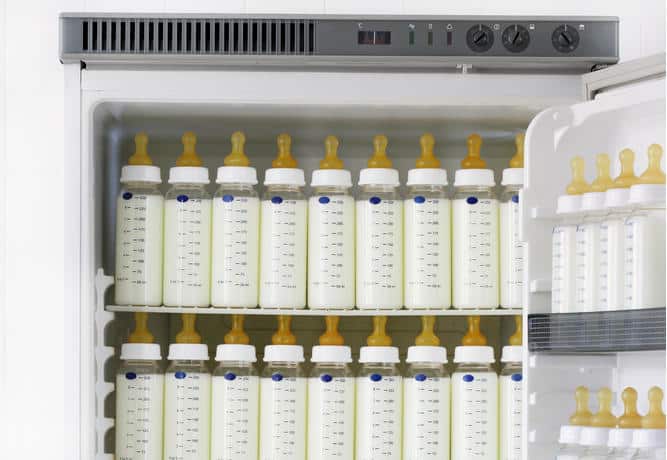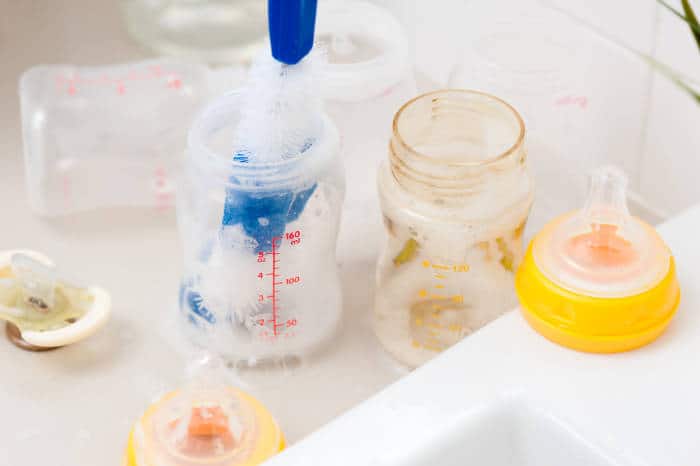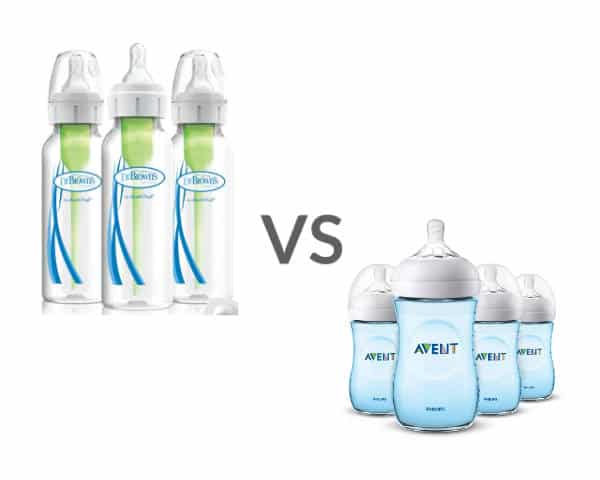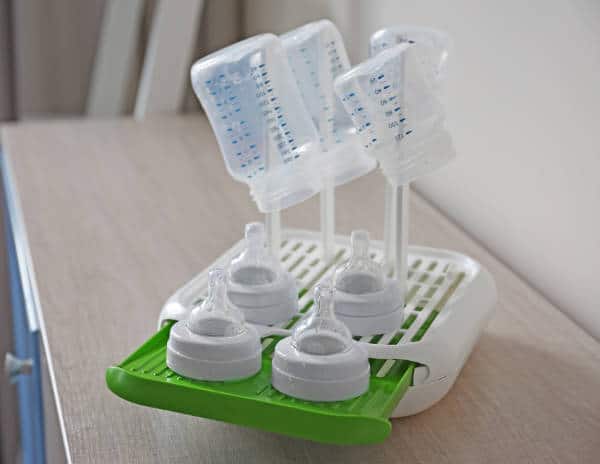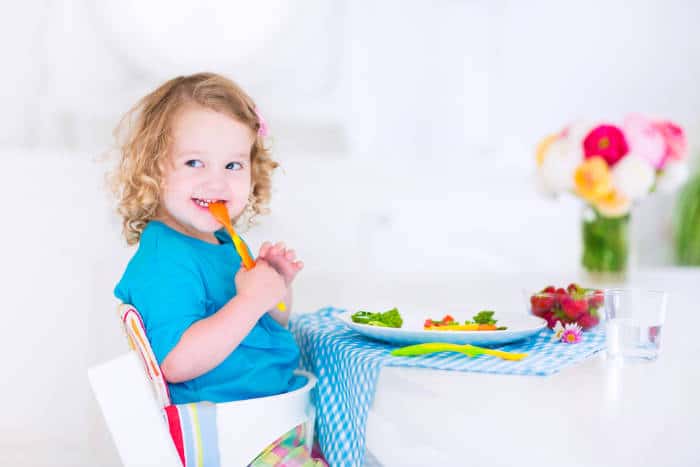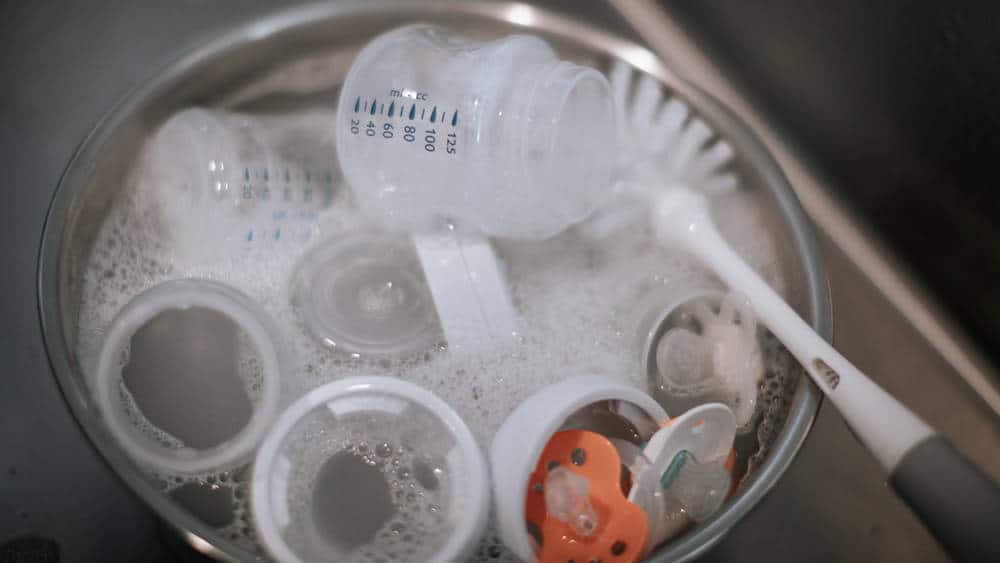Pumping for one baby can be a daunting experience, not to mention shopping for a reliable breast pump to get the job done. Now, add another baby and up the workload…Overwhelmed?
When you’re looking for a breast pump to supplement your nursing or exclusively pump for twins, you’ll want options that are high in quality, reliability, and portability.
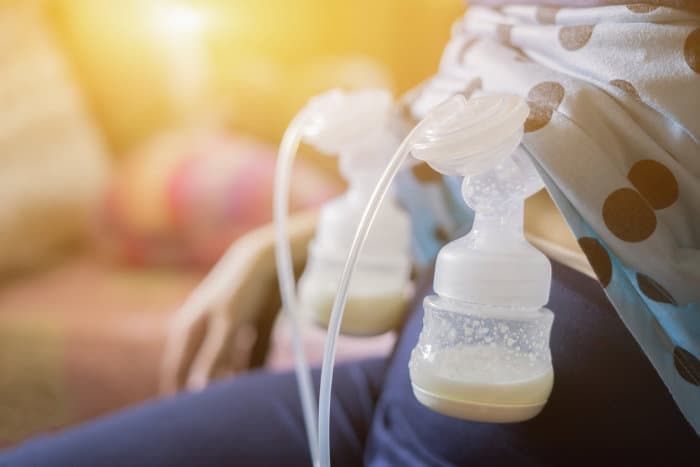
New moms have their hands full. That’s no secret, but moms of multiples are literally out of hands. Considerations such as hands-free pumping or breast pumps that can go anywhere are high on the list of must-haves. That’s why we’ve done our best to outline some considerations that may be helpful when shopping for a breast pump for twins.
The Best Breast Pump for Twins – Our Picks
- Spectra S2 – A hospital-grade option with higher suction and a quiet motor – Best breast pump for twins overall
- Medela Pump in Style – Personal double electric pump with a portable tote bag
- Medela Freestyle – The most portable option for moms on the go, or travelling
- Spectra S1 – The S2’s sister, a hospital-grade option, this one comes with a portable rechargeable battery
- Bellababy Double Electric Breast Pump – Lightweight and portable with customizable pumping
Note: Our individual reviews are below, but you can also click any of the links above to check current prices on Amazon and other retailers
Table of Contents
Breast Pumps For Twins Reviewed
Spectra S2 – Best Breast Pump for Twins
As a hospital-grade breast pump with higher suction, this could be a great pick for premature infants and twins alike. Hospital-grade pumps are recommended to stimulate a healthy milk supply for the babies that need it most.
Equipped with a closed-system design, this breast pump cuts down on contamination issues and cleaning time.
Spectra S2 is customizable with variable suction levels, expression mode, and a let-down phase. Spectra also boasts a massage mode to stimulate milk flow. As an added bonus, this is one of the quieter options on the market and even has a night light.
However, this particular breast pump does not come with a rechargeable battery and does require a plugin. It comes with a 12 volt AC adapter. Another option for easier portability could be the additional purchase of a car adapter.
What we liked:
- Hospital-grade suction
- Quiet and discreet
- Closed system
- Digital controls
- Let down and expression phase
- Night light
What we didn’t:
- Provided flanges may be an ill fit
- No battery pack
- Bigger and less portable than other options
Medela Pump in Style
Medela features a “2-Phase Expression Technology” and custom suction settings. It’s equipped with a let-down button to customize your pumping session as well as a single knob control for speed and vacuum strength.
Like other top options, the Pump in Style is a closed-system.
As an added portability feature, it comes with an AC adapter and a rechargeable battery pack. The included tote bag also has enough room for your pump, accessories, a cooler pack, and any extras you may need.
It has been noted that the Medela is prone to suction loss, but the issue is often resolved with replacement valves. It’s often a good idea to keep an eye on all of your accessories to make sure they’re keeping up with your pumping regimen.
What we liked:
- Let down cycle
- Closed system
- The option of a wall adapter or battery pack
- Large pumping bag and cooler pack included
What we didn’t:
- Manufacturer valves may need replacing
- Possible loss of motor power with extended use
Medela Freestyle
This breast pump could be a great option for twin moms searching for peak portability. It’s lightweight compared to many other personal pumps on the market and comes with a rechargeable battery.
Like its bigger relative, the Medela Pump in Style, this little guy features 2-Phase Expression Technology. It also features a backlit display, a memory button, and a timer.
This breast pump, however, doesn’t come with as many modes or suction settings as the bigger Medela option and may take longer for the same milk output. Additionally, it does face the same motor reliability as other Medelas.
What we liked:
- Rechargeable battery
- Lightweight handsfree design
- 2-Phase Expression Technology
What we didn’t:
- Motor issues
- Less customizability
Spectra S1
Another hospital-grade pick, this Spectra S1 offers the higher suction power and the portability of a rechargeable battery. It also comes with a wall adapter.
Spectra S1 features a closed-system for hygienic pumping. It’s also equipped with custom suction settings along with let-down and expression modes. The S1 also has a massage mode to stimulate optimal milk expression.
Like the S2, this breast pump also features a quiet motor for discreet pumping and a convenient night light for midnight pumping sessions.
What we liked:
- Hospital-grade
- Closed-system design
- Rechargeable battery
- Custom settings
- Massage mode
- Quiet motor
What we didn’t:
- Bulkier than other portable options
Bellababy Double Electric Breast Pump
This is a lightweight and portable double electric breast pump. It features a rechargeable battery, a wall adapter, and a USB.
With custom options, Bellababy has four modes and nine suction levels. However, it lacks the option to cycle through the suction levels without hitting each one (i.e. you have to go through the highest level to get back down to the lower levels, which could be uncomfortable).
It has a digital display and a quiet motor for discreet pumping. Unique to the Bellababy, the flanges are designed as soft silicone massage cushions for added pumping comfort.
What we liked:
- Portable
- High powered
- Battery or USB/wall adapter options
- Quiet motor
- Soft silicone flanges
- Digital display
What we didn’t:
- Changing settings requires going through all of the levels
Our Guide to Breast Pumps
Types of breast pumps
Breast pumps all share the same functions, but there are a number of variables that set them apart. If buying a breast pump for a singleton is like buying a car, you can think of buying a breast pump for twins as the jump up to the minivan, or sprinter van maybe. You want efficiency above all!
Manual breast pumps are convenient backups for moms that don’t need to pump often as they are powered by the user. A newer addition to the market is a hands-free silicone pump that functions as a manual and a milk catchment for nursing.
Electric breast pumps are powered by a wall adapter or battery pack generally and they take much less effort than manuals. Electric breast pumps can be used as singles or doubles and are either personal or hospital-grade.
For even more convenience, a wearable motor (clips to the waistband) is a great option for moms that can’t afford to be sedentary for pumping. Bras that allow hands-free pumping are another great option to add to any pumping routine.
Pump Features:
Suction Settings
The customizability of the suction is, perhaps, more important than the actual power behind it. It’s nearly impossible to tell what combination of speed and suction will work best for you ahead of time. Therefore, a range of controls might actually be more desirable.
Manual breast pumps, of course, are not customizable to the same degree. Some are actually equipped with two phases by means of turning the handle around for a slower cycle though.
Suction settings aren’t generally the main deciding factor when purchasing a breast pump because of the variability in what women need for their personal pumping regimen. In fact, operating at the highest power can actually impede milk flow.
What suction levels do indicate, however, is the quality of the motor. For personal breast pumps, it’s best to look for a pump in which the vacuum strength is rated at 250+ mmHg (unit of pressure).
Hospital-grade breast pumps come in with higher suctions and a more powerful motor. They should have a vacuum strength of at least 300+ mmHg.
More powerful motors do indicate quality and durability. So, although it may not point to better milk flow, it’s a good indicator of how long your breast pump will hold up.
In a singleton situation, a hospital-grade breast pump can seem unnecessary unless there is an underlying condition inhibiting milk supply. However, with twins, it could be beneficial to look into renting one for a few weeks until a substantial milk supply has been established.
Most twins are born prematurely to at least some degree, that’s another factor that many lactation experts use to determine the need for a hospital-grade breast pump.
Double or Single Pumping
Manual breast pumps only come in a single option. This simply means you’ll only be able to express from one breast at a time. For moms that plan to pump while nursing or to supplement while nursing on demand, a manual could be a solid option.
Double breast pumps allow expression from both breasts at the same time. Electric breast pumps generally come equipped for double pumping, but the option to use them as a single is always there.
If you’re building a milk stash, trying to increase milk supply or the thought of developing carpal tunnel from using a manual for hours on end, a double electric may be the way to go.
In terms of pumping for twins, it may be a no brainer that you’ll need to express double the milk. So, a double electric could be the most efficient option. Additionally, if you’re fortunate enough to be able to nurse both babies at the same time, it’s probably best to stimulate the same situation while pumping.
With twins, it’s even more advisable to buy the extra accessories. A pumping bra that allows hands-free expression will free up hands to bottle feed, change diapers, or even brush your own teeth (that’s a struggle, believe it or not).
Express rates
Even with the shop vacuum equivalent of breast pumps and power pumping throughout the day, expression rates will still be variable from woman to woman. In fact, express rates vary throughout the day.
Factors that affect express rates, that are in your control include: diet (what should you be eating?), hydration, stress, rest, cuddling your baby, pumping, and nursing frequency. However, your let-down reflex is entirely individual. Some women have faster let-downs and some slower.
A breast pump with several modes and vacuum settings can be more beneficial than a breast pump with the highest power motor. Electric breast pumps with custom settings you can easily control to mimic your babies’ nursing could be a better option.
Power pumping can also encourage additional let-downs, but often your baby (or babies) is better at emptying your breasts. So, don’t be discouraged if you’re not expressing as you think you should be. Lactation consultants are great resources for questions about milk supply!
Power
Breast pumps have either a manual power source (you) or an electric source. This comes from an adapter, USB, or battery pack. The convenience of a rechargeable battery when pumping with twins has been noted. Pumping anytime, anywhere is an important factor when you’re pumping at that frequency.
Portability
The ability to pump anytime anywhere appears to be a selling point when you’re looking for a pump for twins. Most personal breast pumps on the market are portable, in the sense, they fit into a pumping bag designed specifically for carrying one around. Others offer the option of battery-supported power, making them truly portable.
When shopping for reliable breast pumps for twins, it’s a good idea to consider how much you’ll be toting your gear around and if you’ll be “off-the-grid” in terms of power. The milk flow waits for no one and you don’t want to be caught with a case of engorgement or set yourself back when building a supply.
Quality
As mentioned above, a more powerful suction can point to a higher-quality motor. It’s a good idea to buy a personal breast pump or hospital-grade at the top of their respective ranges.
Personal:250-300 mmHg
Hospital: 320-350 mmHg
Additionally, it’s a good idea to look at the design of the pump. Is the motor casing sturdy? Is it a closed-system that will decrease the opportunity for milk contamination?
In the case of breast pumps, quality and reliability are synonymous. So, it’s important to examine your options closely.
What makes a good breast pump for twins?
Pumping for twins will, without a doubt, be double the work (and pumping is work, so take a break when you can!). A good breast pump for twins will have a powerful and reliable motor that can keep chugging along with your breastfeeding journey.
Consider portability and your power source. Is it a wall adapter with a sufficient cord length or a rechargeable battery? Most moms of twins will appreciate the ability to take their breast pump where life pulls them, whether that be a soccer game or sitting in the living room floor while you nudge both babies in their respective bouncy seats.
Customizability is also an important consideration. Every woman is different and pumping for twins requires efficiency on your part and your equipment. Being able to find your personal settings for milk expression will lead to higher quantity and quality in your milk supply.








